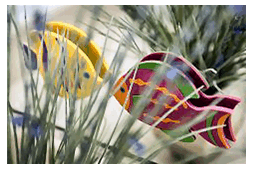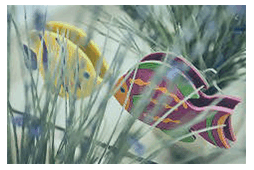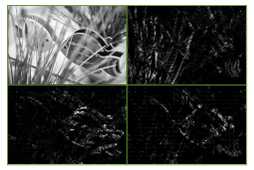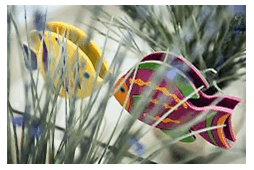Image Compression:
How Math Led to the JPEG2000 Standard

Consider the image at right. It is a thumbnail of an image that in raw format requires 1,179,648 bytes of disk space. Suppose the image is stored in raw format on a web server and suppose you access it via a fast internet connection. In particular assume you are connected to the internet via an extremely fast cable modem that is capable of transferring data at a rate of 1,000,000 bytes (1 Mb) per second. Then it would take your modem a little over a second to transfer the image from the server to your computer. That is not much time to wait, but if you consider the amount of daily internet traffic (the website provided by the MiniWatts Marketing Group estimates the number of world internet users to be about 1.4 billion people for the first quarter of 2008), it is easy to believe that internet traffic would grind to a halt if all images were transferred in a raw format.
As you know, images are rarely transferred via the internet in raw format. Instead they are compressed so that the number of bytes needed to store them is substantially smaller than is needed to store the image in its original form. The image at left is an example of compression using the popular JPEG (Joint Photographic Experts Group) image compression standard. According to Charrier, et al, about 80% of all images appearing on the World Wide Web are stored using the JPEG standard. The compression process produced a very good approximation of the original image and uses only 81,699 bytes to store the image to disk!
The JPEG image compression standard was first introduced in 1992. In 1997, members of JPEG identified some problems with and some features missing from the JPEG standard. They decided to update the standard and the result is the JPEG2000 image compression standard. The key component to the JPEG2000 standard is the discrete wavelet transformation. It turns out that three discrete wavelet transformations are needed to compress the original image using the JPEG2000 standard. One of these transformations is pictured at right.
The image at left is a JPEG2000 compressed version of the original image. It is an excellent approximate of the original image and requires only 69,331 bytes to store the image!
Click on the links at the right to learn more about digital images, compression, discrete wavelet transformations, and the JPEG and JPEG2000 image compression standards.









